In December 2013, Gordon Brown, then British Prime Minister, apologised for the State’s shameful treatment of Codebreaker mathematician Alan Turin; the apology was followed by a Royal Pardon.
Since then, in many parts of the world, it has been possible for people to “come out of the closet” into a climate of tolerance underpinned by anti-discrimination laws.
…between jurisdictional identities
there are tensions on the lines
of religion, gender and politics
Indeed, the concept of openness and visibility is one of the tectonic plates, repeatedly colliding with the bedrock of some freemasonries and has often shaken Grand Lodges.
For many in masonry, the parameters of being a “good mason” are confined within a lodge-room.
Openness and visibility do not extend beyond a limited public recognition of charitability. Beyond the lodge-room, a mason may be recognised as a good citizen without the community aware of the underlying masonic influence.
Commentators on freemasonries have pointed to an inclusive/exclusive tension with which the movement wrestles; and, as earlier Candide’s Columns have indicated, freemasonries may yet have to realise a harmonised identity and role within civil society.
That freemasonries may be considered “broad chapels” is surely inadequate; Between jurisdictional identities there are fundamental tensions on the lines of religion, gender and political ideology. It is on the first of these, religion, which Candide wishes to make an initial and exploratory focus.
…it was not possible to be both
a gentleman and an atheist
For jurisdictions requiring belief in a, non-defined, supreme being, there is a prohibition within lodge-rooms on discussing the relative merits, or otherwise, of the tenets of religious dogma.
This is to ensure, peace and harmony; a problem not arising in jurisdictions without the requirement for such beliefs.
Unfortunately, religious differences between Grand Lodges led to fraternal non-recognition. Worse, freemasonries identifying with religion have occasioned the suspicion and hostility of the world’s leading revealed religions!
To some early masonic constitutionalists, it was not possible to be both a gentleman and an atheist: not an appropriate time for atheists to come out of the closet of unbelief. No matter how vague or ill-defined, belief was more respectable than non-belief. Agnosticism, – not knowing – enjoyed limited acceptance.
Perhaps freemasonries took their rise when religion was giving way to religiosity; that is to say, it was becoming a matter of outward conformance rather than inner conviction.
Perhaps freemasonries today are increasingly similar.
Why is it in some jurisdictions there is a requirement for a belief in a supreme being?
What is being achieved?
Why should a person professing belief in ill-defined concepts be included yet the exclusion of an exemplary citizen without such belief?
How many Freemasons who profess belief in a supreme being would recognise one if they fell over a hundred of them?
For some it seems being religious is just a matter of saying so, and for freemasonries to provide the moral compass.
From among freemasons professing belief in “a supreme being”, Candide has earnestly sought to ascertain a subjective meaning of the term.
The usual answer is that the belief admits of something outside of self. Family, neighbourhood, community, and society are outside of self.
For some, a supreme being exists outside of spacetime. Could there be a concept of supreme being, not extending beyond spacetime which may be and sufficient for a freemasonry requiring belief in a supreme being?
In some freemasonries there is a requirement to believe in the immortality soul and the resurrection of the body. Fortunately, English Freemasonry has never officially required such sectarian, divisive, dogma of its members.
For some it is difficult to understand how there can be amity between freemasonries where some require belief in a vague supreme being with those requiring belief in a specific religion.
This entails some members of a freemasonry in affinity with another would not be allowed to become members of the other but pragmatically ‘received’ as passive visitors.
One current masonic handbook uses the terms “a Supreme Being” and “The Supreme Being”. What is the difference?
Whilst not advocating a gospel according to Google, try a mind experiment. Type in the question Do you believe in The Supreme Being and Spell/Grammar check it.
Then commence a series of variations: upper and lower case, definite and indefinite articles; also with upper and lower-case S and B.
Which are correct/incorrect and why; perhaps this questions the validity of the question. Would it not be easier if ‘being’ was a verb.
Perhaps it is time for freemasonries to come out of the cloisters.
Moral lessons can be interpreted from ancient texts without belief in super-natural concepts or entities. Freemasonries provide a moral compass, derived from the workplace, and applied to the rest of human life; it was never intended as a movement for the acquisition of favour from agencies beyond spacetime.
The ritual is excellent if understood as secular playlets and not as religious liturgy. To have contemporary and future relevance, freemasonries must, explicitly and demonstrably, cut the apron strings that bind it to religion, come out of the cloisters openly and visibly.
Transparency is honesty: to say I do not know is perhaps the ultimate truth.
*This article has been updated from its original publication in ‘Candide’s Column’, Autumn 2009, Pietre-Stones Review of Freemasonry*
Article by: Gerald Reilly

Gerald Reilly was initiated in 1995 into St Osyth's Priory Lodge 2063. Essex. England (UGLE).
He was a founder member of Josh Heller's Allthingsmasonic, and with Josh co-wrote 'The Temple that Never Sleeps' (Cornerstone Books, 2006) he is committed to the development of e-Freemasonry.
Awarded the Norman B Spencer Prize, 2016.
Book: by Gerald Reilly

The Temple That Never Sleeps
by Josh Heller and Gerald Reilly
Freemasons and E-Masonry Toward a New Paradigm
A revolutionary book for every Freemason.The two authors, American and UK Masons, present a radical view of Freemasonry for both today and tomorrow.
In addition to their ideas are those of numerous Internet Masons (E-Masons) from around the world who, by sharing the experience of their own Masonic journey, have provided stunning personal insight into the viability of the Craft in the Internet Age.
This book will challenge your understanding of Freemasonry today and how it might transform for future generations.
Recent Articles: by Gerald Reilly
 How can the allegory of the Tower of Babel teach us tolerance? Language can be a divide. Not confusion among languages but rather within language, a seriously unclear understanding of another’s world-view. We assume it is so different from our own and yet with clarity, a realisation there is more which unites than separates. |
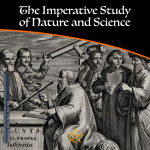 The Imperative Study of Nature and Science At some stage during Freemasonry's Second Degree, the candidate is advised that there is now permitted, something like, the extension of their research into the hidden mysteries of nature and science. Such is an excellent permission and one that each and every Freemason should pursue with awe and passion. |
 Pure Ancient Masonry; P4. A Companion in Rule, Building a better world P4. A Companion in Rule, Building a better world - The four parts of Pure Antient Masonry comprise the ‘body’ Masonic; they are the building blocks of the vital relevance, through enhanced citizenship, wherein the soul of Freemasonry abides. |
 Pure Ancient Masonry; P3. The Master, Building Better Character Part 3: The Master, Building Better Character - Being raised is a transition from knowledge to wisdom. |
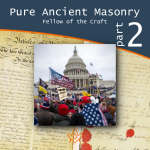 Pure Ancient Masonry; P2. A Fellow of the Craft Part 2: A Fellow of the Craft, Building Better Knowledge. Pure Antient Masonry consists of four parts. ‘Building the Temple’ is the fundamental Masonic allegory for building better people; this must be understood as a seamless whole: |
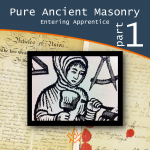 Pure Ancient Masonry; P1. An Entering Apprentice Part 1. An entering apprentice: Building Better Communities; Pure Antient Masonry consists of four parts. ‘Building the Temple’ is the fundamental Masonic allegory for building better people to build a better world |
 Pure Ancient Masonry; Intrduction This series will consider the defining characteristics, lessons and benefits of Three Degrees, the Order of the Royal Arch and when conjoined, Pure Ancient Masonry. |
 The Christianising of British Freemasonries - P4 This concluding article in the series considers the separation of British freemasonries from the Grand Orient of France (GOdF) and maintaining fraternity with the Prussian Grand Lodge of the Three Globes. |
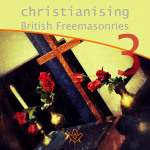 The Christianising of British Freemasonries - P3 Discover the battle for the 'soul' of Masonry. Part 3. French Perdition: ‘…for what fellowship hath righteousness with unrighteousness’? |
 The Royal Arch – ‘the fourth step in regular Freemasonry’ United Grand Lodge of England, has now designated the Royal Arch, the fourth step in regular Freemasonry, it therefore must be concluded that…publications…should now be revised, and based on attracting to the benefits of the four steps. |
 The Christianising of British Freemasonries - P2 How might the battle for the souls of Freemasonries be identified in a way that ensures thriving in the 21st Century? There is no guarantee of the immortality of the soul of Freemasonry! ‘We study the past in order to free ourselves from it.’ (Hariri) |
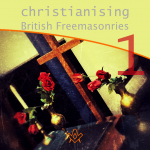 The Christianising of British Freemasonries - P1 This four-part series considers: 1. the separation of British Freemasonries from the Grand Orient of France (GOdF); and, 2. maintaining fraternity with the Prussian Grand Lodge of the Three Globes. |
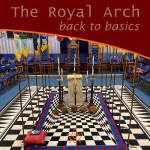 The Royal Arch - Back to Basics In the Royal Arch ceremony, the sojourners are buried with their tools in a vault. The sun, at its highest, provides enlightenment and the principal sojourner is returned to the former companions of his toil |
 The Holy Land and the Holy Sites P4 Fourth instalment of the four-part series, considers ‘masonic’ aspiration and activity regarding the Holy Land and The Holy Sites |
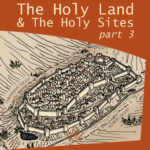 The Holy Land and The Holy Sites P3 Third instalment of the four-part series, considers ‘masonic’ aspiration and activity regarding the Holy Land and The Holy Sites |
 The Holy Land and The Holy Sites P2 The four-part series will consider ‘masonic’ aspiration and activity regarding the Holy Land and The Holy Sites |
 The Holy Land and The Holy Sites P1 In this four-part series, we will consider ‘masonic’ aspiration and activity regarding the Holy Land and The Holy Sites |
 Science and Citizenship: Towards a 21st Century Masonic Mindset. |
 Towards a 21st Century Masonic Mindset: Part 3 ‘Freemasonries’ and the Fourth Industrial Revolution |
 Towards a 21st Century Masonic Mindset: Part 2: ‘Freemasonries’ and Religiosity. |
 Towards a 21st Century Masonic Mindset: Part 1: ‘Freemasonries’ and Governance. |
masonic knowledge
to be a better citizen of the world
share the square with two brothers

click image to open email app on mobile device









